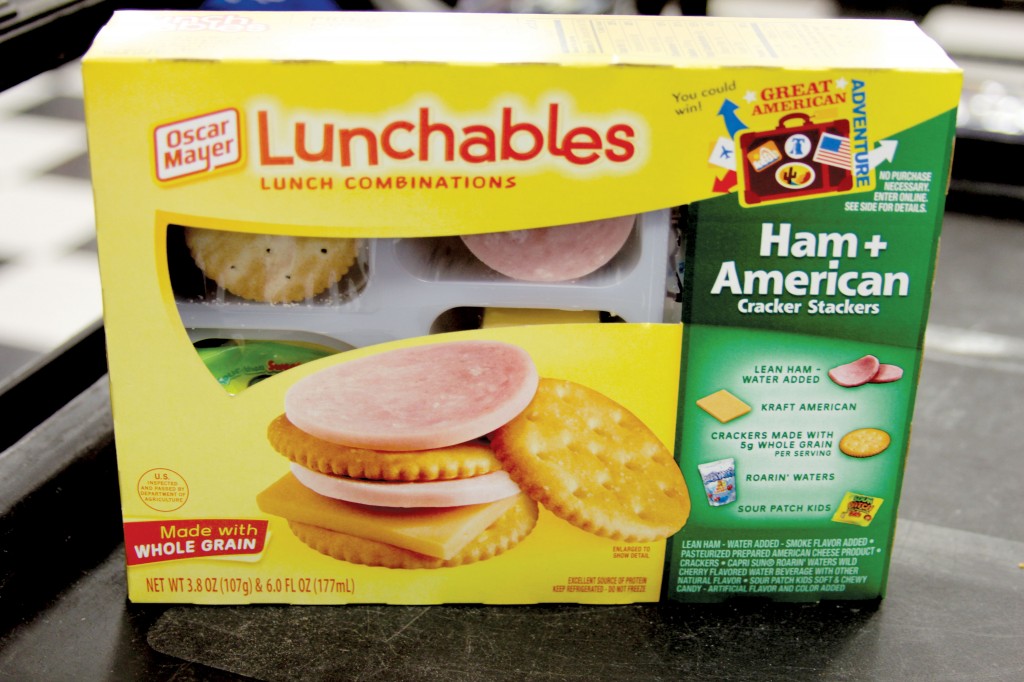
At the end of the ’90s, the world we lived in was a strange place. Ketchup was purple and green, peanut butter came in a tube and cookie kangaroo heads were a snack best served with an obnoxious amount of sprinkled icing. Yet these days, it seems kids are rarely found with Dunk-a-roos in their lunchboxes.
Today, many of these ’90s staples can still be found on our supermarket shelves, but for the most part, companies have changed their marketing strategies to promote their exorbitant amounts of protein or vitamin C. In this decade, the trend of health-conscious eating is more prevalent than ever as parents are more aware of the food they are buying for their kids. This is definitely a good thing, especially in a country where about 12.5 million kids are obese, according to the Center for Disease Control. However, it’s still true that this current generation of children is being deprived of the snacks that defined us ’90s babies.
“They don’t make fun things for kids anymore, these days,” said Abby Hartwell, a sophomore in the Decker School of Nursing. “I don’t think there are marketing campaigns geared toward children anymore … not like the ones we remember, anyway.”
Today’s kids have much healthier diets than ’90s children because parents are more aware of what their children are consuming. And they really care what their kids eat.
More than ever before, packaged foods and their advertising campaigns are focused on healthy aspects. Take the common lunchbox fixture — Lunchables. The boxed lunches of crackers, cheese and cold cuts were so much cooler when they included All-Star burgers, hot dogs and pizza.
“Lunchables are still around,” Hartwell said. “I still eat them, but they’re different now. They’re healthier.”
Lunchables came under fire in 2007 for having a high saturated fat content. They were revamped to be “Sensible Solution” lunch products, going back to the cheese and cracker combinations.
And, sadly, most of our favorite foods, like Rice Krispies Treats cereal and French Toast Crunch, have been either discontinued or their distribution has been severely reduced, largely because of their lack of healthy qualities.
“Whatever happened to those peanut butter things?” said Ariel Mendelson, a sophomore majoring in psychology. “The ones in the tubes? The Skippy Squeeze Stix. They were healthy. They were peanut butter.”
Gone are the days of the Trix Rabbit and the Capri Sun silver surfer commercials we grew up with, as healthy food is now at the forefront of the culinary world. Even Ronald McDonald has fallen into irrelevance, as Happy Meals are generally geared toward healthfulness, rather than the clowns and toys that we remember. There’s nothing happy about a side of sliced apples; clearly McDee’s just doesn’t want a lawsuit.
Dima Turpin, a pediatric cardiologist at All Children’s Hospital in St. Petersburg, Fla., spoke to the Gulfport Patch about the importance of children’s health.
“Children should be taught about healthy snacking at young ages, and to embrace a lifestyle that includes an hour of vigorous physical exercise on most days,” she said.
But it seems a little ironic to worry about counting calories and fat content when kids are still holed up by their computer playing games rather than being active. Maybe back in our day, parents were less cautionary than they are now, but we also didn’t have the Internet and technology surrounding us 24/7. If nothing else, the worst part is that children today can’t experience the same nostalgic culinary joys that we had growing up.
Even the neighborhood ice cream man is afraid to roam the streets for fear of being chased away by angry mobs of pro-organic moms.
“The best candy came from the ice cream trucks,” Mendelson said. “I never see them anymore during the summer, but they were always around when I was younger. We’d chase the truck down the block and get the ice cream pops that looked like Looney Toons characters or Baby Bottle Pops or Fruit-by-the-Foot or Fruit Roll-ups.”
If these fruity treats weren’t your favorites, you could always opt for the mouth-watering Gushers.
“I was always afraid to eat them because of the commercials,” said Rebecca Liebowitz, a sophomore majoring in psychology. “I thought my head would turn into a watermelon.”
Fruit candy still exists, but it’s been largely replaced by organic fruit leathers — the adult version of the snacks — which are being marketed toward children.
However, there are some items that we aren’t too upset were left in the ’90s, like Heinz’s attempt at colored ketchup.
“I think they came out with the ‘Grinch’ movie or something, as an ad campaign,” Liebowitz said. “They had them in my school’s cafeteria, but I don’t know why. They reminded me of bodily fluids.”
The colored “EZ Squirt” ketchup was tinted with food coloring and came in turquoise and pink, but most people seem to remember the green and purple variations. Parents today probably wouldn’t even let their kids near colored ketchup, since food dye isn’t good for you.
“The boys always liked it,” Liebowitz said. “They would scream, ‘Eww! You’re eating snot!’”
Although snacks have changed for today’s kids, our generation will always remember the foods that brought us laughs in our elementary school cafeteria. And if you’re really feeling nostalgic, check out retail stores, like Spencer’s Gifts, that still sell iconic ’90s candy like Ring Pops and Baby Bottle Pops. You’ll have better luck finding something there than at a regular supermarket. Oh, how times have changed.


